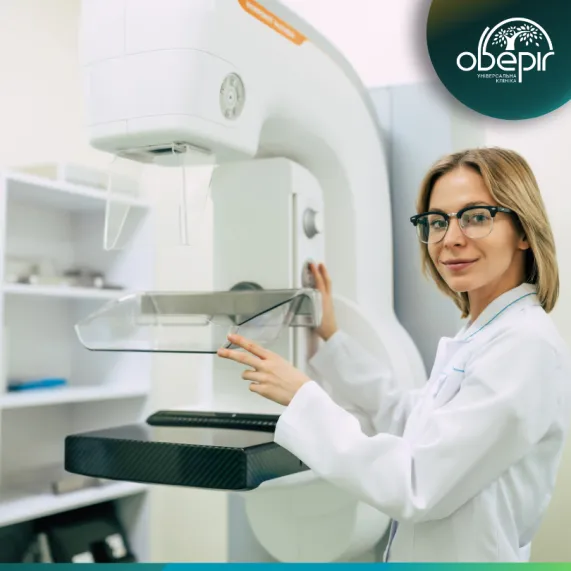BI-RADS Classification as a Mammographic Research Assessment System
10 April 2025


10 April 2025


The BI-RADS (Breast Imaging Reporting and Data System) system is a standardized tool for evaluating the results of breast imaging, including mammography, ultrasound (USI) and magnetic resonance imaging (MRI). Its main goal is to provide a single terminology for describing the detected changes, which facilitates communication between doctors and determines further tactics of patient management.
At the "Oberig" clinic, mammographic examination is performed on a modern Siemens MAMMOMAT Revelation device with a unique technology of wide-angle 50-degree HD Breast Tomosynthesis. Using artificial intelligence, the program creates volumetric images of the breast with clear visualization of tissues, so the doctor receives extremely accurate and reliable mammography results.
• BI-RADS 0: Inconclusive, additional testing such as breast ultrasound and/or MRI is required.
• BI-RADS 1: Normal mammography. No neoplasm, architectural abnormalities, or suspicious calcifications.
• BI-RADS 2: Benign changes — benign lesions are identified, such as calcified fibroadenomas, multiple secretory calcifications, simple cysts, or fatty masses (oil cyst, breast lipomatosis, fibroadenolipoma or hamartoma of heterogeneous density, galactocele).
• BI-RADS 3: Probably benign lesions — high probability of benign process (about 98%), follow-up examination is recommended in 3-6 months.
• BI-RADS 4: Suspicious neoplasm — there are certain features that may indicate malignancy; morphological verification, such as biopsy, is required.
BI-RADS 4 subcategories:
Findings in the BI-RADS 1 - 2 category, in fact, have a 0% probability of malignancy, however, the BI-RADS1 category is used in situations where the breast has no changes to reflect in the study protocol, while the BI-RADS 2 category is used in situations where the radiologist wants to note changes of a benign nature. For any findings in the BI-RADS 2 category, the control interval does not change, general screening is recommended; no further examination is required.
Also an important aspect in assessing changes and predicting the risk of developing breast cancer is determining the density of the breast glands. This is due to the fact that the high density of the glandular tissue of the breast can make it difficult to detect pathological formations, since both normal and pathological tissue appear light on mammograms. Therefore, the BI-RADS system also provides for categorization depending on the density of the glandular tissue of the breast: breasts into four categories:
• A: predominantly fatty breasts.
• B: uneven density.
• C: dense breasts.
• D: high-density breasts.
Understanding and using the BI-RADS system helps doctors accurately interpret imaging results, determine the risk of pathology, and plan further diagnostic and treatment measures.
Need a consultation with a mammologist? Call 044 521 30 03 and choose a convenient date/time for your visit to the doctor!
